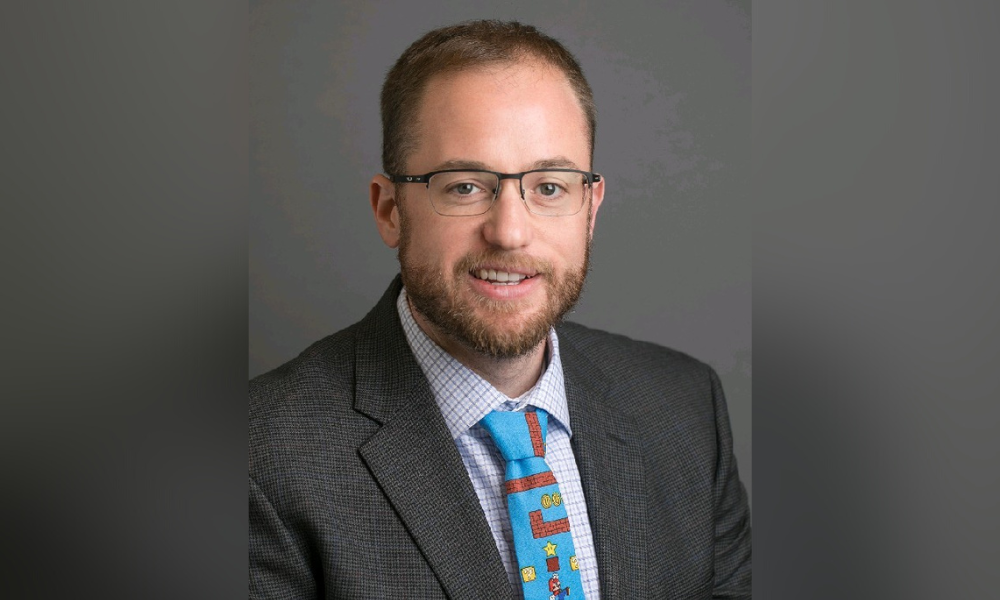
'They don't teach you that in graduate school'

On a Monday morning during the end of the 2000s, Matthew W. Burr received the news that no HR professional wants to hear.
A colleague had committed suicide.
At the time, Burr served as HR generalist at Bombardier Transportation, which designs, manufactures and services business jets. Back then, Burr worked at the company’s New York-based manufacturing facility where refurbished subway cars were overhauled.
The victim was a quality manager, who had joined the company in a temporary consulting capacity only a month or two earlier. With more than 20 years of experience, he was well-respected in the industry, says Burr, who grabbed dinner and drinks with him a couple times. The employee also dealt with mental health issues, as well as run-ins with the law, and was recently released from prison before working for the company.
According to Burr, the employee shot himself at home over the weekend. He showed no signs or symptoms of having suicidal thoughts, and he didn’t tell anyone his plans beforehand.
“I was the first one to deal with it,” Burr, who now runs Burr Consulting, LLC, told HRD. “I had to try to console everyone. They don’t teach you that in graduate school. It’s just like with COVID – you learn as you go, and you have to figure it out.”
Read more: ‘Workplace Doctor’ opens up about suicide attempt, bipolar disorder
After spending an hour in his office with the employee who broke the news to him, Burr informed the general manager and then the rest of the leadership team. With roughly 400 workers at the plant, Burr says leadership took a more verbal approach in regards to communicating the suicide to the workforce. That was quickly followed up with a memo about accessing the employee assistance program (EAP) and scheduling meetings with counselors on-site.
Burr says he did meet with a counselor, who said he handled the situation perfectly, especially considering it was the first time in his career that he dealt with suicide. However, he says he didn’t open up about his own feelings on the tragedy.
“When you’re HR, you put your emotions on the backseat,” Burr says. “You can’t melt down – you don’t have time. You put your mental wellbeing behind everyone else.”
In the roughly dozen years since then, Burr has advised every one of his clients (which include schools, financial firms and manufacturers, among other companies) to establish an EAP. Aside from a couple smaller companies, which have anywhere from five to 10 employees, every client has taken his advice. They were truly grateful to have done so ahead of the COVID-19 pandemic, so their employees had support systems already in place during the unprecedented time.
EAPs provide counseling, referrals, assessments and follow-up check-ins for employees dealing with a multitude of issues: drug abuse, alcoholism, financial problems, legal troubles, job stress, personal problems, separation and loss and family violence. Usually, the program is also offered to employees’ family members who are struggling mentally and emotionally.
The program can be managed by the employer themselves or outsourced to a third-party service provider. Either way, it’s beneficial for companies struggling to keep workers on site and on call. EAPs have reduced absenteeism by nearly 70%, according to a study by the Federal Occupational Health (FOH). That could be a boon to companies looking to increase their retention rate in this highly competitive labor market.
However, employers should note that having an EAP in place without proper research and planning is not enough. Even if companies provide adequate programs, they can turn into failures if employees don’t take advantage.
Burr’s advice to fellow HR pros if they ever find themselves in similar situations is to engage in proactive communication with their workforce. Face-to-face is always better than written, he stresses.
“Recognize who is closest to that employee and have a one-on-one conversation with them. Get the EAP and other resources involved as quickly as possible. If there’s a memorial or donation to be made, do that as well. Make sure people have time to go to the funeral and if they need extra time off, work around that,” Burr says.
“You have to use empathy and emotional intelligence to deal with situations involving suicide, which isn’t easy but unfortunately, it’s part of our job.”